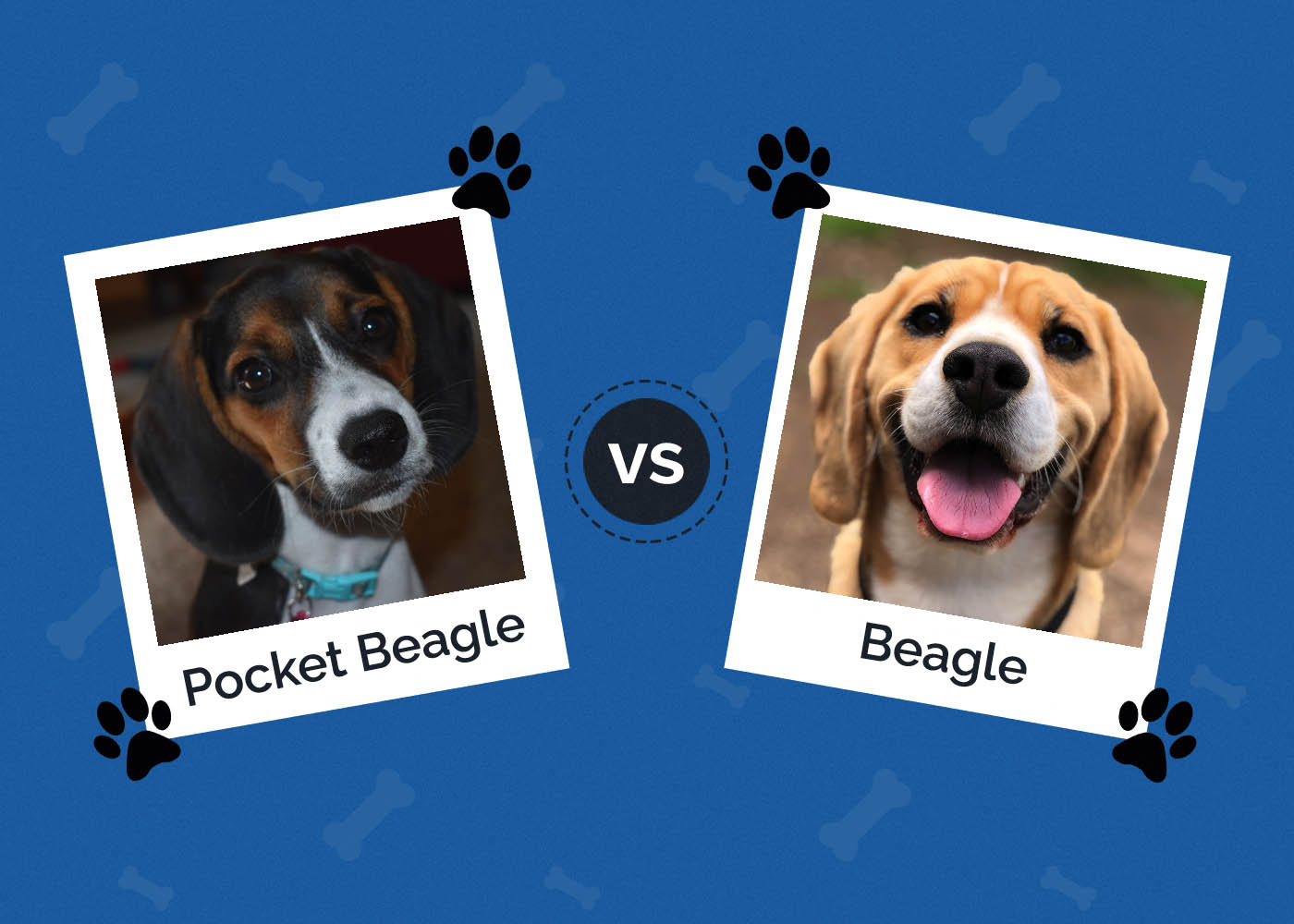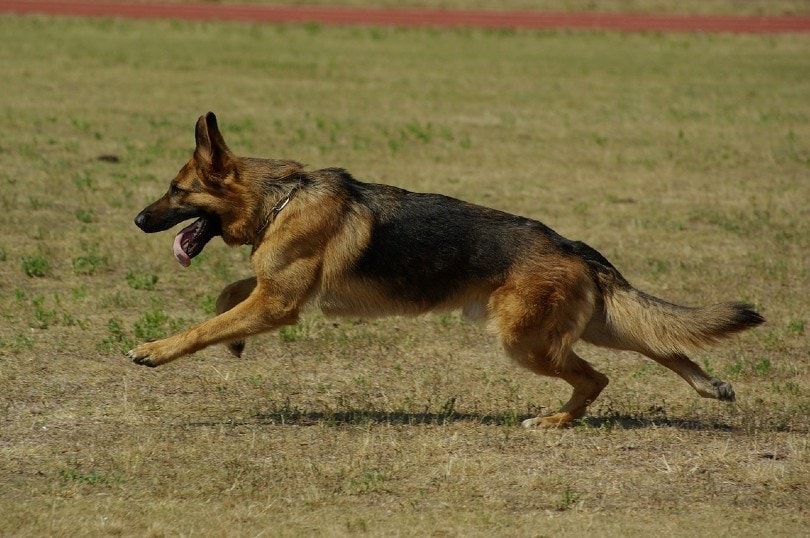When Do Dogs Stop Growing? Growth by Breed Size Explained
By Dean Eby
Updated on

When you first get a young puppy, it’s tiny and adorable, full of energy; an abundance of cuteness. Even puppies that belong to oversized breeds start life very small, though not nearly as small as puppies from toy breeds that can fit inside the palm of your hand. But that adorable puppy isn’t going to stay that size forever. In fact, it’s not going to remain so small for very long at all. Soon, your dog will grow substantially, and while it will still resemble the puppy you had before, it will have far different proportions.
How long can you expect your pet dog to still display some of the traits common to puppies? Do you have years before your dog is fully grown, or are you only months away from seeing your pooch stop growing altogether? Truthfully, it all depends on the size of your dog. Let’s take a look at how breeds of different sizes age and when they cease growing.
Do Dogs Stop Growing When They Become Adults?
Officially, a dog is considered to have reached adulthood once it’s one year old. For some breeds, full-size will have been achieved by this time, so growth will have already stopped. Other breeds, however, will still have far more growing to do at this point. For breeds that aren’t finished growing at one year, growth will continue until their bones have finished developing completely. Depending on the breed, this could take up to two years.
Of course, you have to keep in mind that skeletal growth isn’t the only kind of growth. Even when a dog stops growing, it can still gain or lose fat and muscle, which can still change the dog’s overall size and body composition.
When Do Dogs Stop Growing?
As mentioned, how long a dog will grow depends majorly on how large it will be when fully grown. Large breeds take a lot longer to finish growing than small breeds do. Let’s take a look at the average time it takes for dogs of different sizes to reach their full size and stop growing.
Toy Breeds
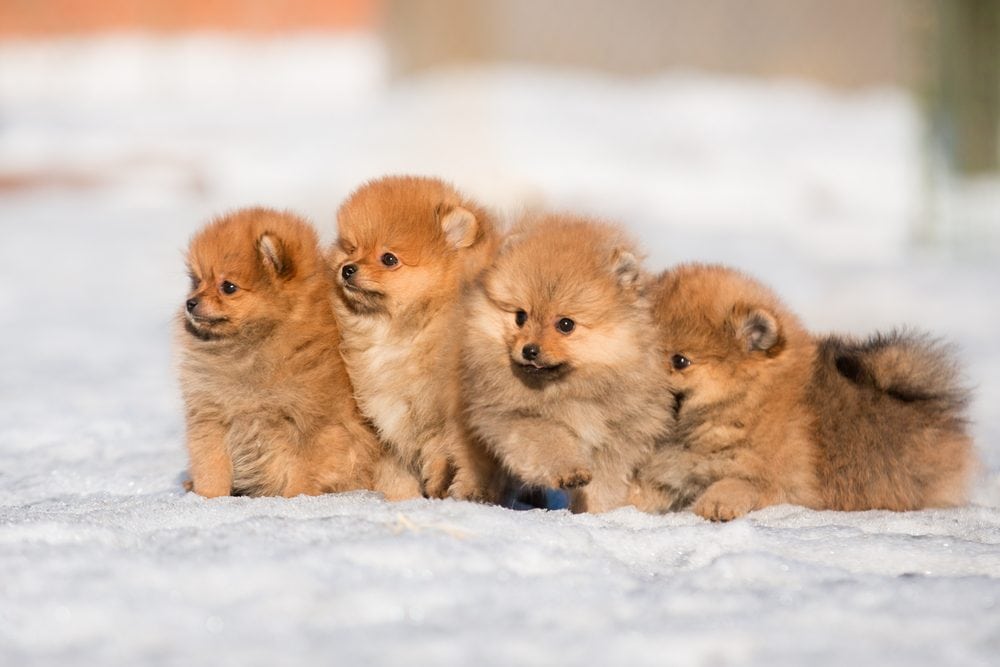
Toy breeds are the smallest dogs of all. Breeds like Chihuahuas, Pomeranians, and Toy Poodles fall into this category. The largest portion of their growth occurs before 11 weeks of age, though they don’t stop growing completely until they reach 6-8 months.
Small Breeds
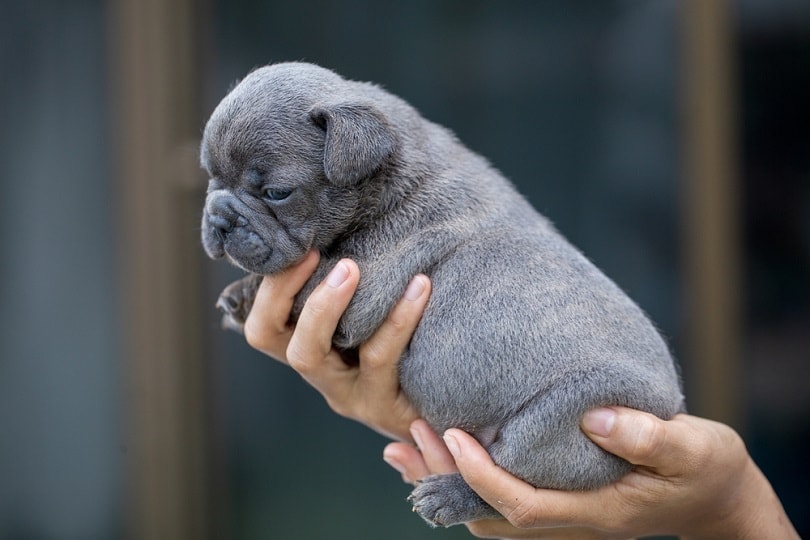
Because small breed dogs have small skeletons, they don’t take as long to finish growing as medium and large breeds. These dogs are larger than toy breeds but still quite small, such as Beagles, Dachshunds, and Pugs. For a small breed dog, it will take about 9-12 months before full size is attained and growth ceases.
Medium Breeds
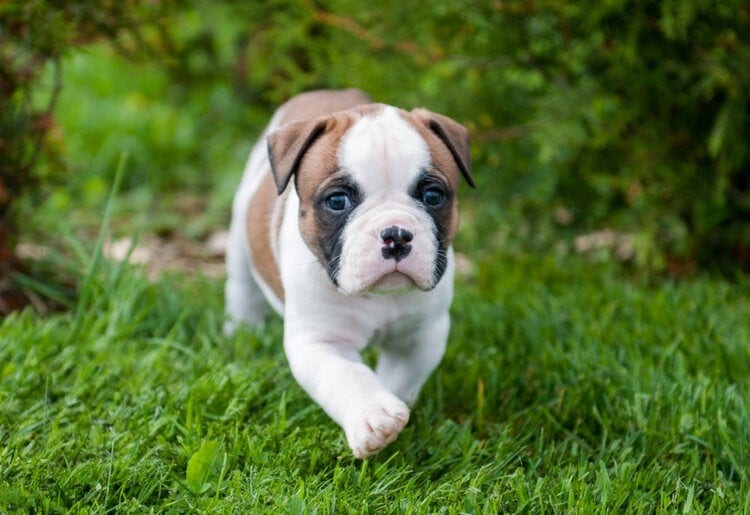
Breeds that will be medium-sized when they’re fully grown generally take about a year or slightly longer to finish growing. These dogs tend to reach their full size around the same time they’re reaching adulthood. Bulldogs, Staffordshire Bull Terriers, and Border Collies are all great examples of medium breeds.
Large Breeds
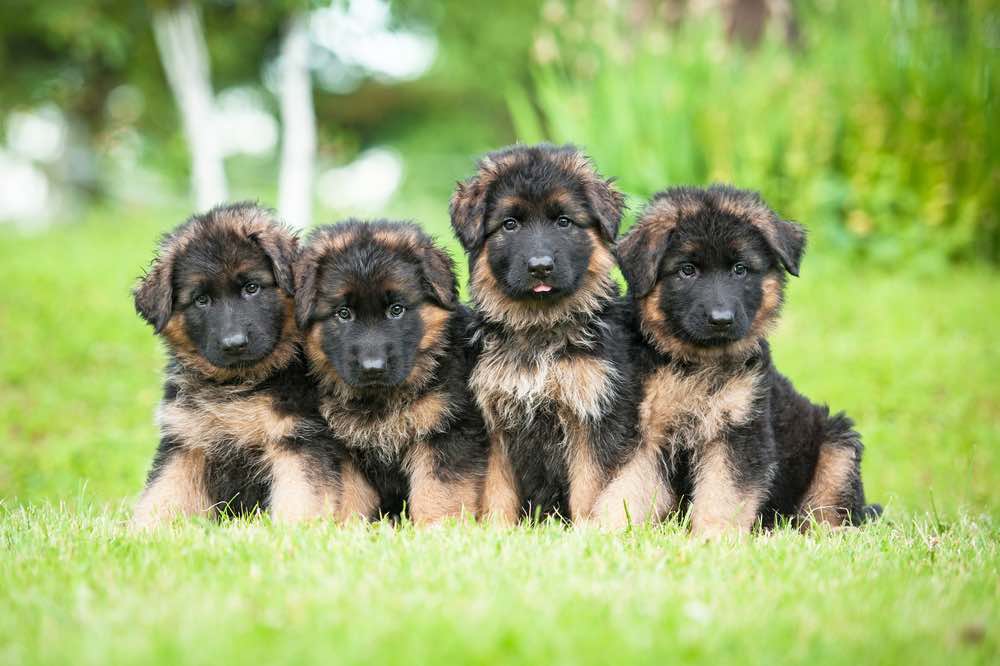
Large breeds take a lot longer than small and even medium-sized breeds to reach full maturity. For large breeds that will weigh upwards of 70 pounds when fully grown, 14-18 months are necessary for the dog to reach full size. Such breeds include Doberman Pinschers, Golden Retrievers, German Shepherds, and Rottweilers.
Giant Breeds
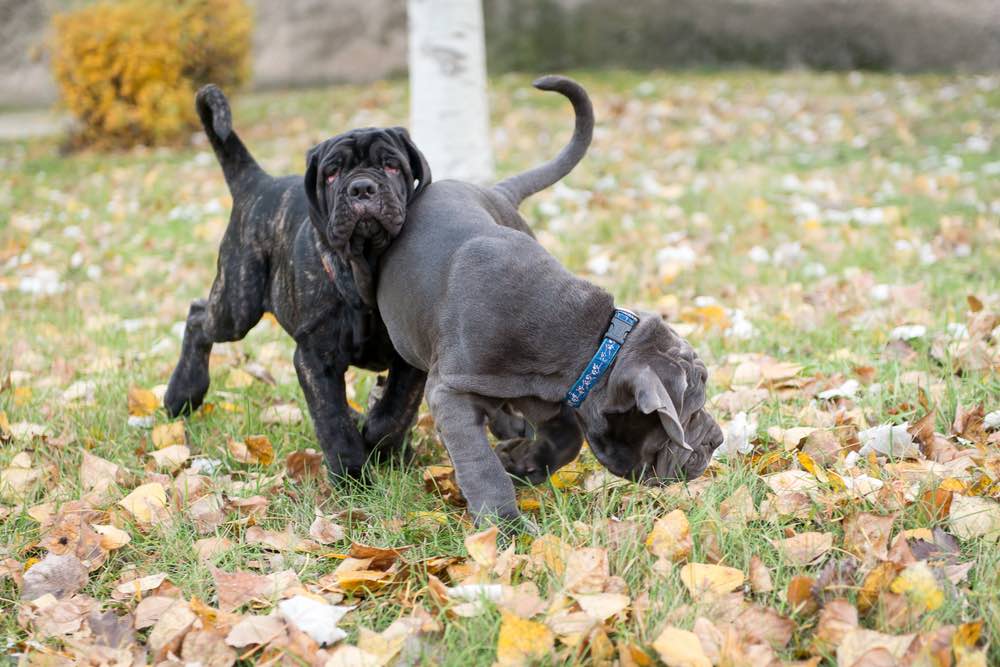
Giant breeds that weigh more than 100 pounds when fully mature, including dogs like Great Danes or Mastiffs, can take a full two years to attain their full size and finish growing.
How to Estimate Your Puppy’s Adult Size
Though there’s no way to predict with 100% certainty what size your dog will be as a fully-grown adult, there are some indicators that you can use to make an informed guess that will suffice as a rough, ballpark estimate of what size you can expect your dog to reach.
Based on the Parents
If you have the opportunity to see your dog’s parents, they can provide a lot of insight into how your dog might look when it’s done growing. While dogs don’t always turn out like their parents, a good majority of them do share similar characteristics to their parents when they’re full-grown.
If the parents are above average in size, then the offspring likely will be too. On the other hand, if the parent dogs are on the small size, you can probably bet that your dog will be as well.

Physical Clues
In some cases, you won’t have any information about the parents of your dog to work with. Instead, you’ll have to rely on some physical clues that could indicate your dog’s future size.
One of the most common ones is your dog’s paws. If your puppy has massive paws that seem out of place on its little body, then it could be a sign that your dog will be very large later in life as it grows into those gigantic paws.
Granted, this isn’t a very accurate predictor. Certain breeds have abnormally small or large paws, so they’re not as good of an indicator. Still, with many breeds, this can provide at least some clue to the dog’s possible eventual size.
Multiply an Earlier Weight
Even if you know nothing about your dog’s parents, there are still some ways for you to semi-accurately predict your dog’s future size. Formulas exist to allow you to take a puppy’s weight and use it to make a prediction about their future weight, based on the breed’s overall size.
For toy and small breeds, the formula is simple. Take the dog’s weight at six weeks of age and double it, then double it once more. So, if the dog is 1.5 pounds at six weeks old, you’ll multiply 1.5 by 2, which equals three. Then, multiply three by two and you’ll have an estimated full size of six pounds.
For medium breeds, you’ll want to use their weight at 14 weeks, rather than six weeks. Take the weight and double it, then add it to half of that same weight. If your dog is 10 pounds at 14 weeks, for instance, you’ll multiply that by two for a total of 28. Then take half of the 14-week weight, 5 pounds in this case, and add it to 28, for a total estimated adult weight of 33 pounds.
Large and giant breeds have two options. The simple method is to just double the dog’s six-month weight. However, this isn’t a very accurate prediction. Instead, you can use their 20-week weight, divided by 20, multiplied by 52. In action, it looks like this: a puppy weighs 30 pounds at 20 weeks old. 30 divided by 20 is 1.5. 1.5 multiplied by 52 equals 78 pounds.
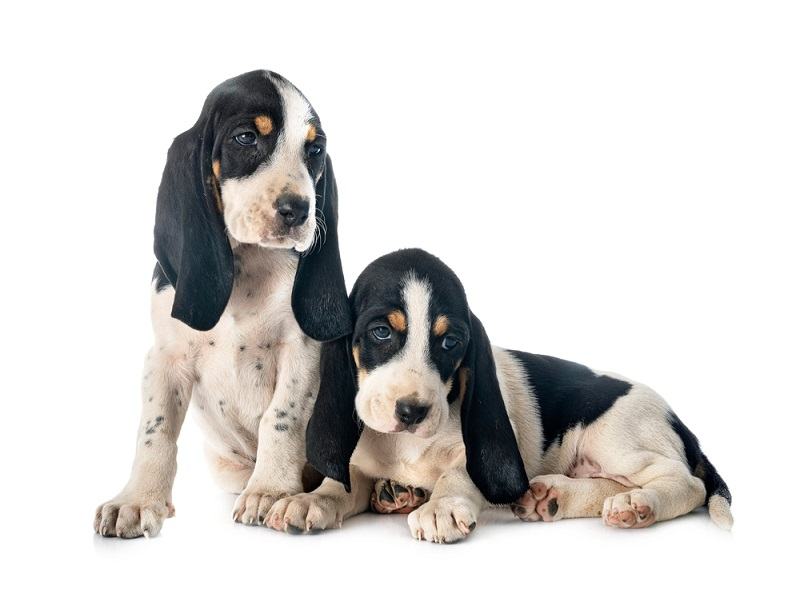
Guess Based on Breed
Of course, if you don’t want to go through all that math, you have no idea what the parents looked like, and you only need a rough estimate of the dog’s eventual size, you can guess based on the breed.
Look up your dog’s breed and see their average weight. You can guess that your dog will be somewhere near this weight when it reaches full size, though it could be substantially heavier or lighter.
This method doesn’t work as well for mixed breeds though unless it’s a popular and well-established mix. You’d have to look at the average sizes of both parent breeds and assume that your dog will be somewhere between those numbers. Again, this is a very rough and imprecise estimate. Your dog could end up considerably smaller or larger than you guess through this method.
Conclusion
Puppies are so adorable that most people probably wouldn’t mind if their puppies stayed that way forever. Unfortunately, that’s not an option that we get, and that cute puppy stage doesn’t last all that long. So, before you know it, you’ve got a full-sized dog instead of the tiny puppy you remember. But when does a dog stop growing?
For small breeds, your dog will be completely done growing by 6-8 months of age. Medium-sized breeds don’t finish growing until about a year old, the same time they reach adulthood. Larger breeds can take 18 months to stop growing, and the giant breeds can even grow for two years before attaining full size.
Check out some of our top trending posts:
- 5 Puppy Contract Templates (PDF)
- How Long Are Dogs Pregnant? Dog Gestation Period
- 5 Dog Adoption Contract Templates (PDF)
Featured Image Credit: Zanna Pesnina, Shutterstock





